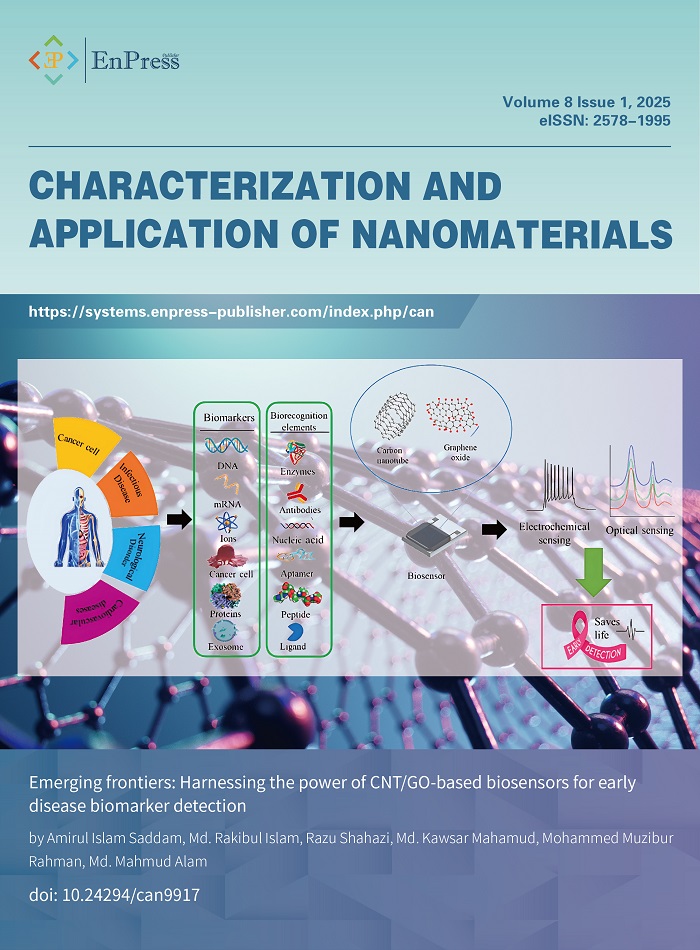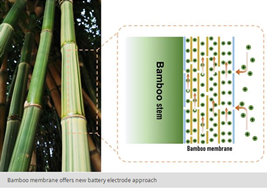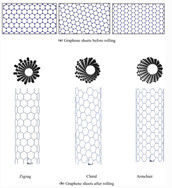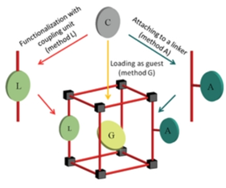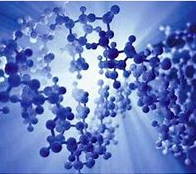Characterization and Application of Nanomaterials accepted for inclusion in Scopus |
|
We are thrilled to announce that Characterization and Application of Nanomaterials (CAN) has been officially accepted for inclusion in Scopus! This milestone reflects our commitment to advancing high-quality research and fostering global scholarly exchange. |
|
| Posted: 2025-08-13 | More... |
CAN supports the 14th Annual World Congress of Nano Science and Technology as the journal partner! |
|
|
|
| Posted: 2025-04-27 | More... |
CAN cooperates with 4th International Conference on Advanced Nanomaterials and Nanotechnology as a supported journal. |
|
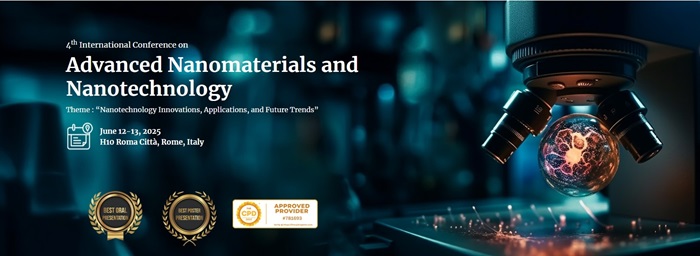 Scisynopsis warmly invites attendees from all over the world to attend the "4th International Conference on Advanced Nanomaterials and Nanotechnology" in H10 Roma Città, Rome, Italy, from June 12 to 13, 2025. |
|
| Posted: 2025-04-25 | More... |
Cover Story for CAN Volume 8, Issue 1 (2025) |
|
We are pleased to annouce the online release of Issue 8, Volume 1 (2025) of Characterization and Application of Nanomaterials! We cordially invite researchers to explore the advancements highlighted in this issue. |
|
| Posted: 2025-04-02 | More... |
Congratulations to Two EBMS of CAN Selected in the 2024 Elsevier “Highly Cited Chinese Researchers” List |
|
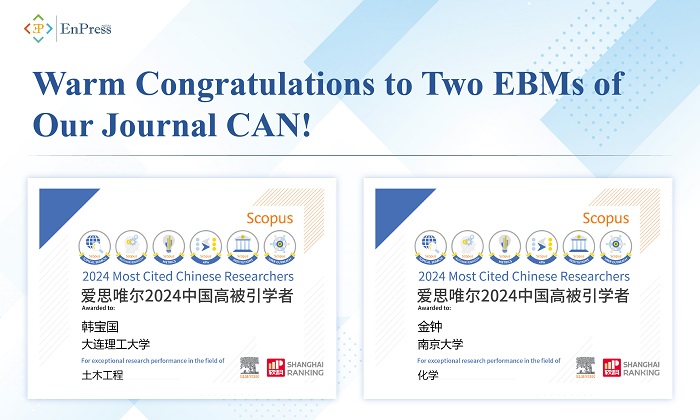 We are delighted to announce that two Editorial Board Members of Characterization and Application of Nanomaterials, Prof. Zhong Jin and Prof. Baoguo Han, have been selected into the 2024 Elsevier “Highly Cited Chinese Researchers” list. This esteemed recognition underscores their exceptional academic performance. |
|
| Posted: 2025-03-27 | More... |
February 28th, NanoScientist Forum |
|
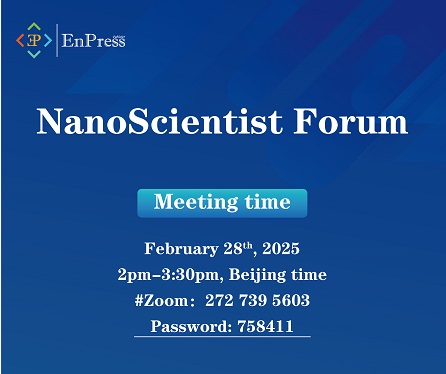 Link: https://us05web.zoom.us/j/2727395603?pwd=Nc93uCFb3QRexEeaYQIceXS6aTzASA.1&omn=84303556216 |
|
| Posted: 2025-02-26 | More... |
2024 CAN Outstanding Paper, Outstanding Contribution Award announced |
|
 |
|
| Posted: 2025-02-21 | More... |
Notice on the change of publication frequency |
|
We are pleased to announce that the journal Characterization and Application of Nanomaterials will transition to a quarterly publication schedule beginning in 2025. |
|
| Posted: 2025-01-12 | More... |
Congratulations to Editorial Board Member Prof. Zhong Jin for Being Honored as a 2024 Highly Cited Award Recipient by Clarivate Analytics |
|
|
|
| Posted: 2024-12-05 | More... |
Call for Presenters: NanoScientist Forum |
|
We are now inviting speakers from researchers and professionals interested in presenting their work at the NanoScientist Forum. Whether you are working on theoretical research, experimental studies, or applied nanotechnologies, we welcome your contribution. Submission Guidelines:
|
|
| Posted: 2024-10-15 | More... |
The Nanomaterials and Devices Innovation Conference 2024 is approaching. |
|
The Nanomaterials and Devices Branch is associated with the Chinese Society for Materials Research, which was established in 2013. The conference will bring together distinguished scholars, young talents, and entrepreneurial representatives in the field of nanoscience and technology to discuss and exchange views on current issues in the field. The aim is to promote the integration of scientific and technological innovation with industrial innovation and drive the development of the nano-industry in a high-end, intelligent, green, and integrated manner. Hosted by: Nano Materials and Devices Branch of Chinese Society for Materials Research Wenzhou University Date: September 20-23, 2024 Location: Grand Plaza Hotel, Wenzhou, China Conference website: https://conf.sciencemate.com/c/2024NMDID The conference will feature 10 sub-forums dedicated to exchanging ideas on 10 major academic themes. More details, please find it here. |
|
| Posted: 2024-09-06 | |
Please follow the new Author Guidelines for your submission! |
|
Please follow the journal's author guidelines and the provided article template to prepare your manuscript. Starting from Vol.7, No.1, articles will be published under the Creative Commons Attribution (CC BY) license (https://creativecommons.org/licenses/by/4.0/), which permits sharing and adapting the article for any purpose, even commercially. |
|
| Posted: 2024-01-26 | More... |
Research News: Decontamination of surface water from organic pollutants using graphene membranes |
|
One of the most important problems nowadays is the contamination of the environment and more specifically of surface and underground waters by toxic substances, e.g., heavy metals and organic pollutants. Shortage of supplies of potable water is occurring in many areas worldwide, owing to the steady increase of the population, yielding to the harsh exploitation of water resources by human activities, which introduce many contaminants, including organic dyes, heavy metal ions, salts of light metals. In order to contrast what has by now already turned into one of the most severe concerns in the world’s community, it is necessary to carry out the decontamination of wastewater. Graphene oxide (GO) is a valid candidate for the absorption and removal of pollutants in water. Graphene material is gradually being used in the fields of electronic technology and biomedicine due to its properties such as ductility, expandability and flexibility. The author gets efforts to explore some commercial graphene products such as graphene materials, aims to demonstrate a method to monitor the status of such a filter in real time during its operating phases: pollutant adsorption, saturation, and regeneration. This study first showed that all types of graphene have excellent adsorption properties. This appears to be due to its large available surface area. This experiment provides a reference for exploring low-cost graphene materials and products preparation. With the continuous discovery of the properties of graphene and its composites and the continuous innovation of the preparation process, graphene will be applied to various devices in daily life and become an indispensable part of our lives. More details, please read the article. |
|
| Posted: 2023-07-01 | |
2023 Volume 6 Issue 1 is released now! |
|
| Volume 6, Issue 1 is now officially released and we are honored to have Prof. Amir Hatami write the Editorial to this issue. Please read here. | |
| Posted: 2023-06-30 | |
CAN has been included in the CAS databases! |
|
We are glad to announce that Characterization and Application of Nanomaterials (CAN) has been included in the CAS databases!
The response email is as follows:
I am pleased to inform you that Characterization and Application of Nanomaterials [ISSN: 2578-1995], has been found suitable for inclusion in the CAS databases. We will begin coverage with the 2022 issues. We will routinely check the website and put the new issue into our production system. If you have questions or concerns, please don’t hesitate to contact me. Best regards,
Thanks to all the authors and reviewers! |
|
| Posted: 2023-01-31 | More... |
Meet Our New Editor-in-Chief:Prof.Dr. Francesco Tornabene |
|
Francesco Tornabene received from the University of Bologna - Alma Mater Studiorum, a M.Sc. degree in Mechanical Engineering (Curriculum in Structural Mechanics) in 2003. He subsequently received his Ph.D. degree in Structural Mechanics at the University of Bologna in 2007. He has been an Assistant Professor and Lecturer since 2012, and from 2022, he has been an Associate Professor. For a long time his scientific interests include the Structural Mechanics, Solid Mechanics, Innovative and Smart Materials, Computational Mechanics and Numerical Techniques, Damage and Fracture Mechanics. He is author of more than 280 scientific publications and 11 books, and collaborates with many national or international researchers and professors all over the world, as visible from his scientific production. In the last years he received different important awards, see e.g. “Highly Cited Researcher by Clarivate Analytics” (years 2018, 2019, 2020). We express our sincere thanks to Prof. Francesco Tornabene for his support and look forward to his guidance in helping Characterization and Application of Nanomaterials reach new milestones. |
|
| Posted: 2022-12-12 | |
Research News: The state-of-the-art of piezoelectric energy harvesting |
|
The global energy crisis and environmental pollutions caused mainly by the increased consumption of nonrenewable energy sources prompted researchers to explore alternative energy technologies that can harvest energies available in the ambient environment. Mechanical energy is the most ubiquitous ambient energy.Piezoelectric transduction is the prominent mechanical energy harvesting mechanism, Thus, piezoelectric energy harvesting has received the utmost interest by the scientific community.Advancements of micro and nanoscale materials and manufacturing processes have enabled the fabrication of piezoelectric generators.
|
|
| Posted: 2022-02-09 | More... |
Research News: Bamboo inspires faster battery recharging |
|
Scientists from Queensland University of Technology have developed a new way to boost the efficiency of batteries with electrodes that can be recharged at a much faster rate based on the unique properties of bamboo. The study, which furthers research into 2D nanomaterials for the very fast transport of ions through a battery, was inspired by a water-carrying membrane inside bamboo that allows it to be the fastest growing plant in the world. The lab of Ziqi Sun has been studying how best to mimic the structural and optical properties of natural objects – such as seashells that have inspired advanced optical thin films, fish scales that have inspired multifunctional nano-coatings – to develop sustainable energy solutions from low-dimensional nanomaterials.
|
|
| Posted: 2021-09-09 | More... |
Research News: A new perspective on the application of nanomaterials to tumors |
|
What is the nanomaterial? Nanometer materials refer to materials whose structural unit sizes are in the range of 1 nanometer to 100 nanometers. This new type of material was discovered by scientists in the middle of the last century. Due to its unique size and structure, this new type of material has acquired unusual capabilities.
|
|
| Posted: 2021-05-20 | More... |
Research News: CNT is the strongest material , with astonishing mechanical properties |
|
Research in carbon nanotubes (CNTs) has gained enormous interest in nanotechnology and materials science due to its remarkable physical and mechanical properties.
|
|
| Posted: 2021-03-06 | More... |
Research News: Emission Properties of Carbon Nanotubes |
|
One of the most promising applications of CNTs is in field emission (FE) devices. High aspect ratio and atomically sharp radius of apex curvature of the CNTs enhance the local field and lower the threshold field for electron emission. |
|
| Posted: 2020-11-23 | More... |
Research News: What Are MOFs? |
|
In recent years, a particularly attractive and novel strategy has become available for the fabrication of photoresponsive, porous, and crystalline molecular solids from appropriately functionalized chromophoric linkers.
|
|
| Posted: 2020-09-25 | More... |
Research News: Advances and Applications of Diamond-like Nanocomposite |
|
Diamond-like Nanocomposite (DLN) coatings are amorphous, hard and wear resistant coatings, deposited using a plasma-assisted CVD process. These coatings consist of two interpenetrating networks, one being a diamond-like carbon (a-C:H) network and the other a glass-like a-Si:O network. |
|
| Posted: 2020-03-15 | More... |
Research News: Nanocomposites are an important resource in the 21st century |
|
In recent years, advances in nanotechnology have promoted the development of reinforcements with dimensions at the nano-scale (10−9 m). This dimensional shift has opened new possibilities for altering physical properties of polymer matrices (mechanical, electrical, thermal, etc.) by incorporating relatively small amounts of nanofillers (several weight percent or less) .
|
|
| Posted: 2020-03-10 | More... |
Research News: lead halide perovskites are sensitive under light |
|
Organic-inorganic hybrid metal halide perovskites, an important class of crystalline materials with excellent low-temperature solution processability and band structure tunability, have been known for decades. They have received great attention in recent years for applications in various types of optoelectronic devices, including photovoltaic cells, light emitting diodes and optically pumped lasers. |
|
| Posted: 2019-11-20 | More... |
Research News: Illinois engineers protect artifacts by graphene gilding |
|
Gilding is the process of coating intricate artifacts with precious metals. Ancient Egyptians and Chinese coated their sculptures with thin metal films using gilding—and these golden sculptures have resisted corrosion, wear, and environmental degradation for thousands of years. The middle and outer coffins of Tutankhamun, for instance, are gold leaf gilded, as are many other ancient treasures. In a new study, Sameh Tawfick, an assistant professor of Mechanical Science and Engineering at the University of Illinois at Urbana-Champaign, inspired by this ancient process, has added a single layer of carbon atoms, known as graphene, on top of metal leaves—doubling the protective quality of gilding against wear and tear. Read more at: https://phys.org/news/2018-09-illinois-artifacts-graphene-gilding.html#jCp |
|
| Posted: 2018-09-12 | |
Research News: Carbon nanodots do an ultrafine job with in vitro lung tissue |
|
Epidemiological studies have established a strong correlation between inhaling ultrafine particles from incomplete combustion and respiratory and cardiovascular diseases. Still, relatively little is known about the mechanisms behind how air particulates affect human health. New work with carbon nanodots seeks to provide the first model of how ultrafine carbon-based particles interact with the lung tissues. An international group of researchers created a 3-D lung cell model system to investigate how carbon-based combustion byproducts behave as they interact with human epithelial tissue. In Biointerphases, an AVS journal, the investigators discovered that the surface properties of the carbon nanodot's properties and aggregation patterns affected their distribution in a lab-grown copy of the lung's barrier layer, the epithelium. The carbon nanodots served as representatives for air pollution particles. Read more at: https://phys.org/news/2018-09-carbon-nanodots-ultrafine-job-vitro.html#jCp |
|
| Posted: 2018-09-12 | |
Research News: Chemists develop nanocatalysts for continuous biofuel synthesis |
|
A chemist from RUDN synthesized new catalysts with ruthenium (Ru) nanoparticles for producing biofuel from organic biowaste. Nanocatalysts support more intensive and sustained reactions than the compounds currently available in the market. The results of the study were published in the ChemSusChem journal. Rafael Luque, an external specialist from RUDN, works on the synthesis of gamma-valerolactone (GVL) together with his Chinese and Spanish colleagues. This colorless liquid can be obtained from food waste or harvesting leftovers. GVL may be used as a safe solvent or an additive to gasoline or may be distilled into hydrocarbons, "green fuel" for internal combustion engines. Read more at: https://phys.org/news/2018-09-chemists-nanocatalysts-biofuel-synthesis.html#jCp |
|
| Posted: 2018-09-12 | |
| 1 - 28 of 28 Items | |


_1.jpg)

